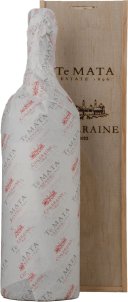Château les Carmes-Haut-Brion
Chateau Haut Bailly Pessac
Chateau d'Yquem
The harvest began very early, on the 5th September, and lasted 9 weeks. This made is possible to reflect all the diversity of a year in which both flowering and veraison were very spread out. Picking began especially early at Yquem in 2014. Some 25% of the crop was brought in before the 15th of September, providing a rare and precious background of acidity.
Te Mata Estate Coleraine Cabernet Merlot
Te Matas Hawkes Bay estate is a prestigious winery with a rich history, producing some of New Zealands most celebrated wines. If the Langtons Classification crossed the Tasman, Te Mata Coleraine would sit alongside Grange at its very pinnacle. Established, esteemed, outstanding vintage after vintage, the glowing adjectives come thick and fast.
Château Montrose
France's Bordeaux, is the spiritual home of the Cabernet family of grapes, which extends beyond Sauvignon and Franc to Merlot, Malbec and Petit Verdot. If you love Margaret River Cabernet blends, or indeed the Merlot dominant reds of Hawkes Bay, NZ, then you must look at the wines upon which many of them have been modelled. This wine is Cabernet and Merlot, deep and rich, cassis and earthy cedar, structure and uncommon length - all hallmarks of Grand Cru Bordeaux.
Chateau Haut-Bailly
While the estate known as Chateau Haut-Bailly dates back to 1461, its wine production began in 1530, falling into the hands of the de Leuvarde and Le Bailly families in 1630. It was purchased in 1998 by Robert G Wilmers, a Harvard-educated banker, and his French wife Elisabeth and under their care, the estate has begun producing some of the best wines in its history. The cellars and production procedures were renovated and modernised and this year, the Chateau itself was awarded government recognition of its cultural and vinious heritage.
























